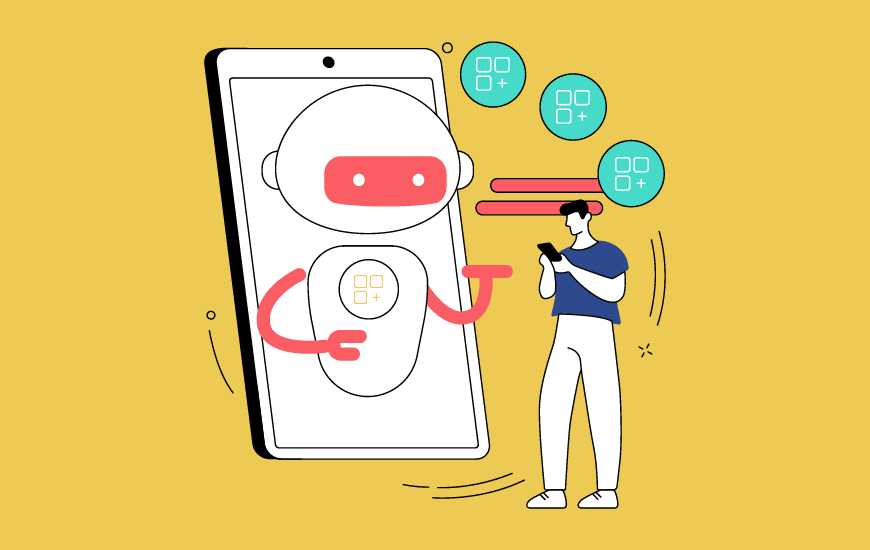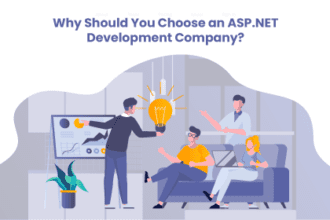
The software-as-a-service (SaaS) model has attracted a large number of customers huge popularity in the last few years as it continues to offer advanced solutions in various types of industries. Customers are expecting more from these SaaS product companies as they want something different and a product with more features.
Numerous businesses now employ a variety of cutting-edge technologies like artificial intelligence (AI), low-code development, and more to stay ahead of the competition.
In this blog, we will discuss the top 10 SaaS trends that you should watch out for in 2023.
What is SaaS?
In simple words, SaaS is a model for the distribution of software that gives businesses a lot of flexibility and is cheap, making it a great option for many different business models and industries. The technology is intended to simplify business models and increase overall efficiency.
The majority of technology leaders are currently putting top software development trends into action and using SaaS BI tools to help them.
10 SaaS trends you must watch for in 2023:
Artificial Intelligence
In recent years, different industries are adopting artificial intelligence (AI) integrations. In general, companies are less confident about AI in the current situation. However, 37% of respondents still view AI projects as trendy.
Despite the fact that machine learning and natural language processing are already major trends in SaaS technologies, this AI trend has expanded to cloud solutions and is anticipated to take root in the future of SaaS. Technologies powered by AI make use of human speech pattern recognition. So, you can also hire AI developer India who can develop artificial intelligence that speeds up data handling and improves security and automation.
Machine Learning
Focused on processing data and learning capabilities, ML is a subset of AI. People often take it as the same for artificial intelligence, which is not right.
Salesforce is a great example of a SaaS product that uses the power of machine learning more advantage. Businesses’ sales teams can use one of the most popular and effective CRMs to find patterns in customer behavior that they might not otherwise notice.
Plus, the app suggests a roadmap for salespeople based on the data the app analyzed.
SaaS Integration
In the beginning, there were no integration solutions for SaaS. There was no way to combine services and products. As a result, customers were expected to use third-party solutions, which institutions and users both found to be unappealing, particularly those who were not yet ready to move all of their data to a cloud platform.
However, businesses that prefer a hybrid system that combines an on-premise system and a cloud backend are drawn to SaaS providers that offer greater integration capabilities.
In addition, integrations in SaaS enable partial automation of processes to eliminate a significant portion of human error.
Micro SaaS
As there is throat-cut competition in the market, we begin to witness many companies that aim to adapt and have a more innovative and creative approach that can help in providing services to their customers.
One of the ways to adapt to this competitive environment is to create smaller, more flexible products, which can be run by very small teams or even a single person. A lot of the time, smaller SaaS products are just add-ons or extensions of larger ones that aim to make the user experience better for particular industries.
We may see a significant increase in the number of micro SaaS products, particularly those aimed at serving smaller customer groups and niches, due to their lower risk and lower operating costs.
Everything Goes Mobile
As the world is shifting towards a more mobile-first era, we’ll certainly start witnessing more SaaS products moving in the same direction.
Naturally, this comes with a lot of challenges, especially on the design side, where it’s important to make interfaces that can be used by seniors, people with disabilities, and neurodiverse people. You need to hire mobile app developer in India who can tackle these issues easily and develop a top-quality SaaS app for you.
Low Codes Apps
For the past few years, low-code and no-code development platforms have been on everyone’s radar, including the SaaS industry. Low-code platforms enable less “techy” startups and individuals to enter the market, allowing for market diversification because they are significantly more accessible to the average person.
Developers, designers, and product executives can spend more time and money on innovation and addressing the industry’s most pressing issues if there is less code. In a similar vein, startups will be able to develop quick MVPs on low-code platforms, allowing them to test more solutions at a faster rate.
Vertical SaaS
The primary distinction between vertical and horizontal SaaS is their focus. The first, as its name suggests, caters to a diverse range of industries. The latter, on the other hand, is a product that targets a more restricted audience, typically within a single niche.
Given the industry-specific solutions, vertical SaaS is a comfortable and cost-effective option for many businesses. Increased flexibility will result in increased revenue and decreased customer acquisition costs.
Innovacer (healthcare), Guidewire (insurance), and BioIQ (medical sphere) are notable examples of vertical SaaS.
White Label SaaS Products
White-label SaaS products, which offer complete resealability for a business looking to rebrand the SaaS platform as its own, are another one of the biggest trends in the SaaS industry. When sold to customers, white-label products are designed without branding. The customers may then decide to add their branding to the product in order to further resell it to their customers.
Businesses that are able to sell a product but lack the technical expertise or development resources to build it can benefit greatly from white-label software. The fact that businesses don’t have to put a lot of money into a white-label SaaS product at the beginning is a benefit. Smaller businesses will find it very appealing because of this.
White-label SaaS products that meet the requirements of a variety of business models are plentiful. White-label food delivery apps, for instance, enable restaurants and aggregators to brand their food delivery platforms. Because of this, the best food delivery app is a white-label one.
Migration To PaaS
The Platform as a Service (PaaS) strategy lets you move your infrastructure to the cloud, whether it’s a public cloud or a private cloud.
To meet IT needs, many companies have their own data centres. As a result, a dynamically expanding infrastructure frequently incurs excessive operating costs. With our Platform as a Service (PaaS) migration to the cloud, we provide a low-cost infrastructure solution.
Companies now have access to the most cutting-edge infrastructure (Infrastructure as a Service, IaaS) and operational services, such as databases, backup, recovery, storage, monitoring, VPN, and security, as a result of the shift to the cloud.
Focus On Reducing Churn
As with the majority of SaaS managers, you too must be dedicated to managing and expanding your company. However, in order to accomplish this, you must ensure that you are satisfying the requirements of your clients, which includes reducing churn.
Since businesses spend anywhere from five to 20-25 times more to acquire a customer than to keep an existing one, reducing churn is a top priority for any SaaS manager who wishes to cultivate brand advocates who will stick with their company for the rest of their lives. SaaS software development companies also experience churn. Despite the fact that it is not always avoidable, it can be managed by following a few of the aforementioned guidelines.
As we have seen, reducing churn requires more than just basic product enhancements; It’s all about making your customers’ lives better. If you are able to accomplish that and make a significant impact on the lives of your customers, churn will decrease, and you will be able to resume operating and expanding your business.
Conclusion
As of today, the industry of SaaS application development is going through the same changes as other domains. Obviously, such changes promise new business opportunities for entrepreneurs. To win this digital battle, you must get in touch with a SaaS app development company, and equip your business with the latest technology.
Analyzing the recent data, we can see the future of SaaS in expanding small niche markets being caused by micro-SaaS and vertical SaaS trends. Additionally, AI, the shift to PaaS, and white-labelling trends result in more complex and personalized cloud offerings.
Improving data security will undoubtedly also be a major SaaS challenge in 2023. Additionally, you ought to focus on the overall experience of your customers. Lastly, developing cloud apps in 2023 and beyond requires a mobile-first mindset.








